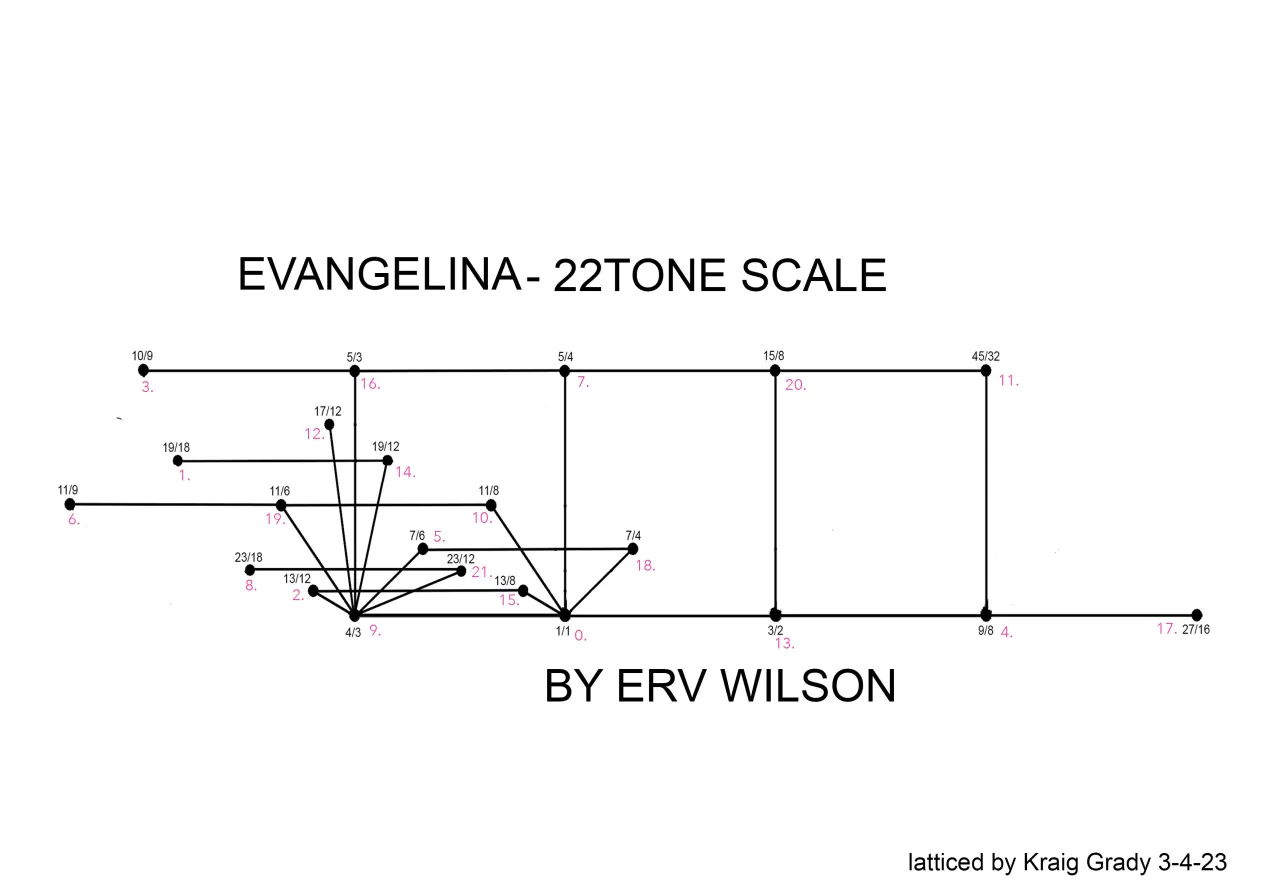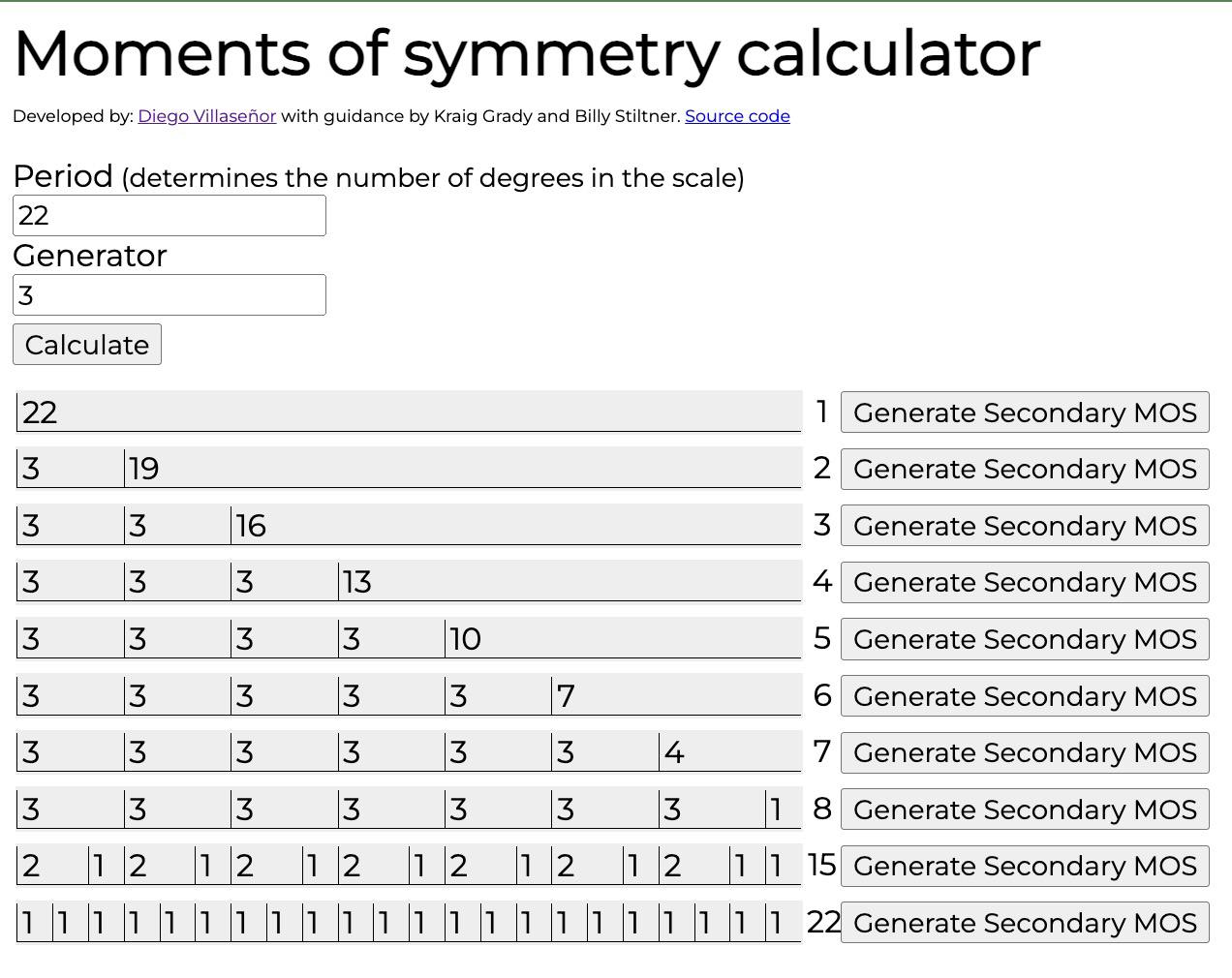Exploraciones de Junio 2024
Playlist
Player loading, please wait...
[English text below]
La mañana de Jaiki Luna
Pieza en la denominada escala (o temperamento) Onirotónica de la afinación de 18 tonos iguales (18-ED2). La escala tiene la forma 3 3 1 3 3 1 3 1.
El nombre no tiene nada que ver con la música, sólo quise dedicársela a Jaiki Luna (mera, aunque siempre justificada, ocurrencia) mientras veía y escuchaba a los pájaros cantar aquella mañana cuando sonó esta pieza.

Ta ta ta taa ta ta ta taa
Otra pieza en 18-ED2 pero usando un modo de transposición limitada con la forma 1 1 2 2 1 1 2 2 1 1 2 2. 18-ED2 tiene las mismas segundas mayores y terceras mayores que la escala temperada de 12 tonos (12-ED2), a la vez que tiene 3 distintas escalas hexatónicas. Estas armonías se transparentan en el estudio, aunque hice mi mejor esfuerzo por evitar la sonoridad de la escala hexatónica.
Es también una exploración polimétrica al sostener un ostinato de 6/8 en la mano izquierda mientras la derecha melodiza de manera más libre.
21.06.2024 (3-de-22 en Evangelina)
El humor en general de todo el mes es el de una música para piano bastante silenciosa, y lenta, y esta pieza no es la excepción.
Explora la escala derivada del momento de simetría (MOS) 3\22 en la afinación Evangelina) (misma que fue usada en los Preludios Suavecitos (Pa' Dinh)).
 Lattice creado por Kraig Grady
Lattice creado por Kraig Grady
En este caso el MOS le da un color sumamente distinto a la afinación. Un MOS podría decirse que es una familia de escalas, que crecen como anillos, conteniéndose unas a otras. En este caso se usaron los anillos de 7, 8 y 15 tonos. Y predominantemente el conjunto de notas del anillo de 15 que excluyen a las del anillo de 7. Aunque el microtono que se reitera a lo largo de la pieza justamente es un intervalos con notas provenientes del anillo de 15 y del de 7.

7 en 3o2
Esta pieza marca la salida del mood silencioso y tranquilo del mes.
Es una música inspirada por una escala no-octavante "inventada". Ésta tiene un periodo de una quinta justa (3/2) y tiene 7 notas. La idea de que tenga 7 notas es que funcione relativamente bien en un teclado de 12 tonos (dado que la quinta en este teclado tiene justamente 7 semitonos).
La escala tiene los siguientes intervalos:
9/8
8/7
7/6
6/5
5/4
4/3
3/2
El hecho de que esta la cadena de quintas 4/3 - 3/2 - 9/8 hace que la escala produzca algunos intervalos de octava, aunque estos no persistan por más de un par de periodos.
Al ascender en la escala, dado que es no-octavante se producen nuevos tonos (infinitamente) que no existen en los periodos inferiores.
Si deseas apoyar mi trabajo puedes hacerlo aquí: https://videco.bandcamp.com https://ko-fi.com/videco
Jaiki Luna's Morning
Piece in the so-called scale (or temperament) Oneirotonic of the tuning of 18 equal tones (18-ED2). The scale follows the pattern 3 3 1 3 3 1 3 1.
The name has nothing to do with music, it was just a whim dedicated to Jaiki Luna (a mere though always justified occurrence) while watching and listening to the birds sing that morning when this piece sounded.
Ta ta ta taa ta ta ta taa
Another piece in 18-ED2 but using a mode of limited transposition with the pattern 1 1 2 2 1 1 2 2 1 1 2 2. 18-ED2 has the same major seconds and major thirds as the 12-tone equal temperament (12-ED2), along with three different hexatonic scales. These harmonies are evident in the study, although I did my best to avoid the sound of the hexatonic scale.
It also explores polymeter by sustaining a 6/8 ostinato in the left hand while the right hand improvises more freely.
It also explores a continuous acceleration :).
21.06.2024 (3-in-22 on Evangelina)
Explores the scale derived from the moment of symmetry (MOS) 3\22 in the tuning Evangelina) (the same one used in the Preludios Suavecitos (Pa' Dinh)).
In this case, the MOS gives a very distinct color to the tuning. An MOS could be said to be a family of scales, growing like rings, containing each other. In this case, rings of 7, 8, and 15 tones were used, predominantly using the set of notes from the 15-tone ring excluding those from the 7-tone ring. However, the microtone that repeats throughout the piece is precisely an interval with notes from both the 15-tone and 7-tone rings.

The overall mood for the month is that of rather quiet and slow piano music, and this piece is no exception.
7 in 3o2
This music is inspired by a non-octave scale "invented". It has a period of a perfect fifth (3/2) and consists of 7 notes. The idea of having 7 notes is that it works relatively well on a 12-tone keyboard (since the fifth in this keyboard is exactly 7 semitones).
The scale has the following intervals:
9/8
8/7
7/6
6/5
5/4
4/3
3/2
The fact that the chain of fifths 4/3 - 3/2 - 9/8 exists in the scale produces some octave intervals, although these do not persist for more than a couple of periods.
Ascending in the scale, since it is non-octave, produces new tones infinitely that do not exist in lower periods.
This piece is a departure from the quiet and calm mood of the month.
If you want to show your support for my work, you can do so here: https://videco.bandcamp.com https://ko-fi.com/videco